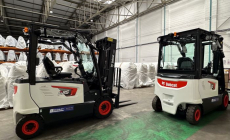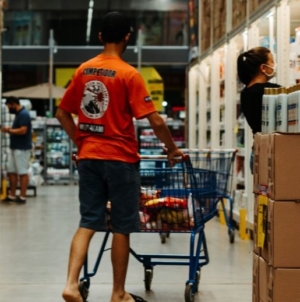-
QUECLINK NAMED LEADING TELEMATICS HARDWARE PROVIDER AFTER YEAR OF GROWTH AND INNOVATION - January 9, 2026
-
Women Leading the Way in the UK Material Handling Industry - December 12, 2025
-
LiftEx 2025 live from Liverpool - December 11, 2025
-
DATA ANALYSIS – THE FOUNDATION OF EVERY PEAK SEASON - December 5, 2025
-
Creative education specialists Creative Hut give 3PL full marks for onboarding excellence - December 5, 2025
-
Unlimited Industries raises $12M to build the AI construction company that will power America’s future - December 4, 2025
-
Scottish Leather Group gets full-support solution from Rushlift - December 4, 2025
-
Etaily lands strategic investment from Japan’s SMBC – bringing total funding to $24M for Social Commerce enablement platform - December 4, 2025
-
Winners lift their LEEA Awards and raise the industry - December 4, 2025
-
Prism eLogistics and Brand Angels Partnership Gives Brands the Full Package - December 3, 2025
Cutting the financial and environmental cost of reverse logistics
For e-commerce companies, dealing with returns can be a daily challenge. Physically processing the volume of goods being returned – quickly – to minimise the time between them coming back to the warehouse and then being available for re-sale again, can be a constant battle.
One reason for the volume of returns is that different consumer demographics have very different shopping habits and this has impacted on reverse logistics. Younger shoppers – millennials and digital natives – tend to prefer to order large numbers of similar garments online, try them at home and they expect to return the bulk of items. It’s a very different way of shopping to generation X for instance, who will prefer to go to a physical shop, have a big try on and just purchase the goods they expect to keep.
Tight turnaround needed
In some industry sectors, especially fashion and footwear, something like 30% of items shipped from the warehouse will be returned, as consumers order multiple colours and sizes to try at home. Aside from the administrative burden that processing high levels of returns creates, incoming items need to be quality checked and returned for sale as quickly as possible, to avoid missed re-sale opportunities. This is especially important for fashion and homewares businesses, which have distinct seasonal ranges and a short shelf life in which to maximise sales values.
Monster of a problem
Some companies have offered “free returns” as a way to entice customers but that’s clearly not really sustainable. They were useful in the early days to get consumers to feel confident about buying online and to get accustomed to the idea and convenience of making returns. Brands needed to make that as easy and cheap as possible – especially the pure ecommerce brands who had the disadvantage of not having a physical presence.
But now, in some cases, it has created a monster that needs to be reined in. This is starting to happen already and a few companies are now saying that they will penalise serial returners and block them from shopping on their sites. Is that viable? More realistic is to simply increase the minimum order value to qualify for free returns or invite high value consumers only to enjoy free returns within a loyalty club scheme.
Minimising the returns footprint
There is clearly an environmental cost to this way of shopping that consumers are perhaps not always aware of – but they should be. The ‘buy expecting to return in bulk’ consumer mind set is wasteful, because of all the packaging and miles travelled in transit to individual addresses. People don’t always realise it, but the carbon footprint of goods bought electronically can be much greater, as goods are dispatched to and returned from individual addresses versus being available to the masses from a retail outlet.
How can this be resolved? Retailers and manufacturers need to work on educating consumers about the impact of their ordering behaviours, but obviously, they also want to maximise sales, so they aren’t going to be willing to do anything to jeopardise revenues.
Perhaps having more items returned to stores, or dedicated returns zones for a group of retailers would be an option? Pure online retailers could form partnerships with high street stores and they could help ease the burden, by having store staff check the goods and ship whatever is re-sellable back to the warehouse. It’s also possible that some stores could incorporate the cost of returns into a shipping service, like Prime, which takes into account the likelihood of returns.
Automating with a WMS
Technology is key to making established returns processes more efficient. The problem is that for many items, the goods have to be physically checked to ensure they are fit for resale and this is time consuming and costs money. Using a WMS means that products can be booked back into the inventory system centrally and they are then instantly visible as available to buy.
Outsourcing can be another good option for retailers too, because processing returns is a distraction away from the daily business of sales order processing. Having a dedicated partner to take care of everything and from where items re-sold can also be shipped onto customers, is an efficient solution. It’s especially useful for fast fashion retailers or for brands who have an outlet store comprising past season’s ranges and want to keep these items separate from the main warehouse.

































